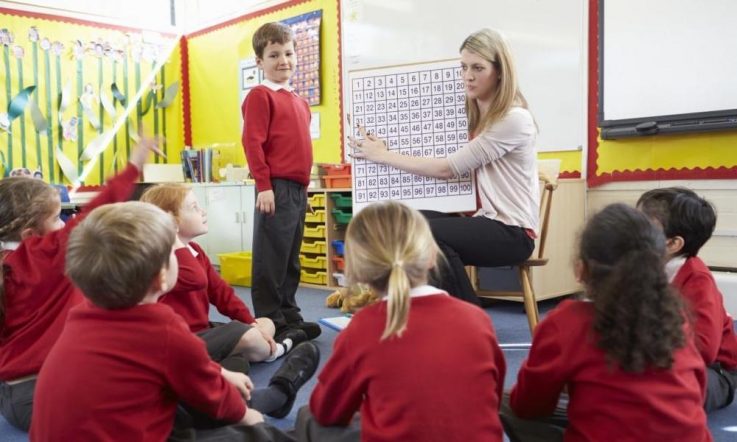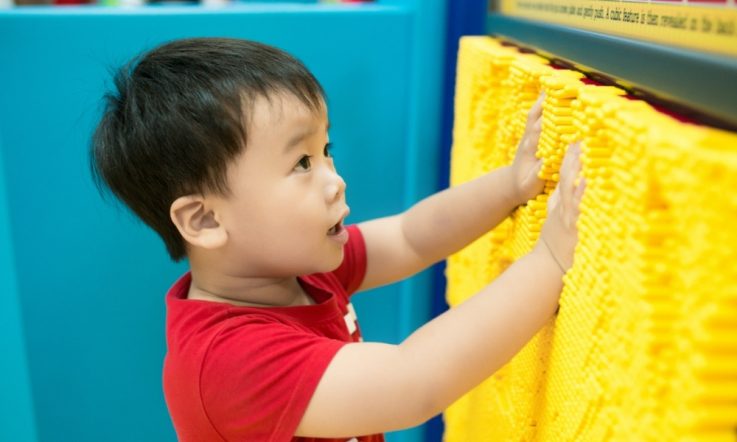Jo Earp: Hello and welcome to Teacher magazine's podcast series on School Improvement. In this episode, I speak to Neil Lloyd, deputy principal of Brisbane’s Youth Education and Training Centre, about the school’s efforts to address literacy and numeracy skills gaps among students.
I started by asking him about the school data or wider research that prompted the intervention.
Neil Lloyd: We tend to find that – and the research backs all this up - that kids in detention are typically significantly behind their peers in terms of their literacy and numeracy skills. So, more often than not, kids are at least two years behind peers, but increasingly that gap is even wider. Some of our recent testing data suggests the mean reading age of kids in detention is less than 10 years of age, and that's for a mean age group of about 15.6 [years of age]. We're looking at a five year difference between where they're actually functioning and the expectation - and this is pretty consistent with the research worldwide actually, which tends to suggest that, irrespective of the mean age of kids in detention, they tend to be around 11 or 12 years of age in terms of their academic functioning.
JE: So, what did your literacy and numeracy intervention program involve?
NL: We had a good look at our pedagogical framework – that philosophy on what we're doing and how we're implementing pedagogy in the classrooms. So, that was our starting point. We wanted to make sure that we had a common approach to teaching, something that we could articulate to new staff but something as well that was, in essence, based on research that was leading practice, I guess, in an alternate education setting or a detention centre environment; something that was proven to be working and something that we could continue to measure and look at to make sure that it was effective. So, we wanted to have things like common unit lesson plans, we also wanted to develop more of a team culture so that there's more sharing of ideas and more collaboration... But we also wanted to develop resources that could be used within the school and beyond the school, because a lot of our students, we find when they leave us they don't return to any other education environment, they're sort of outside the education system... As part of our intervention we developed a suite of teaching materials around the Certificate I in Core Skills for Employment and Training that can be used widely. So, you know, kids can access paper copies, or they can do the interactive PDF versions on an iPad or computer if they so chose. It allows us to send work to wherever that kid goes and then they can send it back to us and we can assess them and give them feedback and that type of stuff. We also developed a systematic approach to look at kids' skills, so, we're not just interested in their coursework but how we can look at some of those skills that are holding them back. A lot of our kids have missed chunks of school, they might have been suspended for a couple of weeks in Year 7 and they missed some really vital information, or they left school at the end of Year 5 and didn't re-enrol for another six or 12 months and so they missed some significant chunks and those chunks are things that are standing between them and maybe quite a rapid acceleration. So we wanted to make sure that we had an approach that not only assessed those skills but also provided teaching interventions to address those skills and lift those kids up as rapidly as we could. So some of that approach means that every student that comes to us is assessed on their point of enrolment against a range of domains. We're looking at their literacy skills, reading skills, their writing skills, their numeracy skills, and then for each student we then develop a skills gap plan...
JE: When did you actually carry out this work, [was] this last year?
NL: Yes, a lot of this work has been ongoing from perhaps 2012/2013. We were lucky enough to get an eLearning Grant at the end of 2012 which gave us some sort of impetus to do a lot of the work in terms of development of the literacy and numeracy curriculum, but a lot of the other work has been ongoing in terms of developing the skills gap plans and developing some of the work around what that framework looks like and the assessment procedures that sit in and around that - so the frequency at which we're testing. And just getting better at looking at our own data and how that data is useful, how we can collate it, present it to teachers and then how teachers can then use that data to make interventions - in some ways, that's still an ongoing process.
JE: And so the early information that you have collected so far, what has been the impact on those skills that you talked about?
NL: In some ways, the most important thing is that we're able to identify what those skills are, and that gives us then some concrete information to teach to and so in and of itself that's critical... But, in a concrete sense, we know that from the development of our literacy and numeracy courses, our student outcomes have risen significantly, so we had well over 130 Statements of Attainment this year to kids in 2013, whereas in 2012 we were looking at 10 or 15 Statements of Attainment for the year.
JE: Excellent. We mentioned briefly the next steps, I guess it's just then to carry on the work that you're doing and again assess the impact of that?
NL: That's right. We've got a significant bank of resources now for teaching kids at that Certificate I level, which that accounts for about 50 to 60 per cent of our student cohort. But we also have a significant proportion of our cohort who are functioning below the Certificate I level - kids who might have a reading age of eight or nine years of age - so we're spending a lot of energy trying to develop teaching resources for those students. We're developing resources [now] for kids operating around the reading age of five or six years of age, in order to be able to more adequately cater for our student population... I guess the next step as well is working with teachers in more of a coaching and mentoring focus as well, so that we'll work with them around their pedagogy to make sure that they're supporting each other through that teams approach and through that mentoring approach, but also through a more managed process so that we can give them that support that they need to develop their teaching expertise as teachers, but also as teachers within a detention centre context.
JE: Excellent. Neil Lloyd, thanks for joining us at Teacher magazine, good luck for the future.
NL: Thank you.
To listen to more Teacher magazine podcasts and to access our articles, videos and infographics – visit www.teachermagazine.com.au, or join our community on social media via Facebook and Twitter.
- Neil Lloyd and colleague Andrea Hayes shared their work with delegates at the Excellence in Professional Practice Conference (EPPC) in Melbourne earlier this year, where they won the ACER Foundation Award for the most outstanding presentation on school improvement in adversity.
- Make sure you don't miss a Teacher podcast, subscribe for free by visiting acer.ac/teacheritunes or www.soundcloud.com/teacher-ACER.
How are you monitoring skills gaps for your students?
Is the evidence that you are collecting informing future practice?
Do you have specific intervention strategies in place?



